by Dr. M | Mar 4, 2024 | Dry Eye, Education
Tears are an essential part of your eye’s health. Your eyes will not function properly, and you can experience significant discomfort if you don’t have a proper supply of tears. You may have complained to your eye doctor that your eyes are running, but they say you have dry eyes. How you have dry eyes if you have an excess of tears?
Not all tears are created equal. While commonly linked to feelings of sadness or joy, tears are much more than mere indicators of emotional states. They play a crucial role in eye health and vision. Tears can be categorized into three distinct types: basal, reflex, and emotional. Each type has unique compositions and functions, highlighting the complex nature of this seemingly simple feature of the human body.
1. Basal Tears: The Essential Eye Protectors
Basal tears are the unsung heroes of our daily lives. They are continuously secreted to keep the eyes lubricated without you even thinking about it. These tears form a thin, protective layer over the cornea, which is essential for nourishing our eyes and keeping them moist and safeguarded from dust and other irritants.
Basal tears consist of three layers: an oily layer, a watery layer, and a mucous layer. The oily layer, produced by the meibomian glands, prevents evaporation of the tear film. The watery layer, produced by the lacrimal glands, hydrates and nourishes the cornea. And the mucous layer helps the tears adhere to the eye’s surface.
Our eyes become dry and uncomfortable without basal tears, leading to dry eye syndrome. A scratchy or sandy feeling is typical when deficient in basal tears. They also serve an essential function in maintaining a clear vision. Your vision can blur as your car windshield blurs with old wiper blades. Each blink spreads basal tears across the eye’s surface, providing a smooth optical surface critical for sharp vision.
2. Reflex Tears: Nature’s Response to Irritants
Reflex tears are produced in response to irritants in the eyes. These include substances like onion vapors, smoke, or even a strong gust of wind. Their primary function is to flush out these irritants and protect the eye from harm. Reflex tears are released in larger quantities than basal tears and contain significantly more antibodies to help fight bacteria and other pathogens that might enter the eye. But they contain less nourishment than basal tears, leading to a diagnosis of dry eye when you have an excess of tears.
This type of tear is produced by the same lacrimal glands that produce basal tears but are triggered by a different mechanism. When an irritant is detected, a reflex arc involving the nerves of the eyes and the brain is activated, producing these types of tears.
3. Emotional Tears: The Tears of Feelings
Emotional tears are perhaps the most intriguing and unique of the three types. Triggered by various emotions, from deep sadness and grief to extreme joy and relief, these tears contain a chemical makeup different from basal or reflex tears. Studies have found that emotional tears contain higher levels of stress hormones, such as adrenocorticotropic hormone (ACTH), and neurotransmitters like leucine enkephalin, an endorphin that reduces pain.
The purpose of emotional tears is still a subject of research and debate. Some theories suggest that they help to soothe and regulate intense emotions, possibly by releasing these hormones. Others believe that crying has evolved as a social signal, conveying vulnerability and fostering human empathy and social bonds.
Conclusion
Tears and the pathology of tears are much more complicated than expected. The study of tears, from their chemical composition to their psychological and social implications, is a fascinating field that bridges biology, psychology, and sociology. The three types of tears – basal, reflex, and emotional – each serve distinct and vital functions. They protect our eyes, clear them of irritants, and help us to express and process our deepest emotions. Any breakdown of the production, distribution, or function of tears can cause discomfort, blurred vision, and, in severe cases, damage to the eye.
by Dr. M | Feb 4, 2020 | Cornea, Dry Eye, Exam, Medical Eye Care, Sun Damage, Surgery, Vision
There is an eye condition called “Surfer’s Eye”. Can you guess how it got its name?

It’s not about the water…but If you thought it had to do with too much sun exposure, you would be right!
Long-term exposure to UV rays from the sun, as well as wind and dust, may result in growths on the surface of the eye. Surfers are particularly vulnerable, since they spend their time in the sun without sunglasses or other eye protection.
The technical term for growths on the eye caused by sun exposure are called Pinguecula and Pterygium. The condition appears on the eye’s conjuctiva (the clear covering over the white part of the eye.
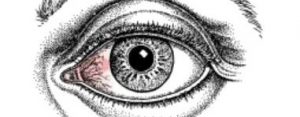 Pinguecula is a yellowish, raised growth on the conjunctiva. It’s usually on the side of the eye near your nose, but can happen on the other side too. A pinguecula is an abnormality formed by protein deposits, calcium or fat. It’s like a callus on your finger or toesisipisi.ccsisipisi.ccsisipisi.ccsisipisi.cc.
Pinguecula is a yellowish, raised growth on the conjunctiva. It’s usually on the side of the eye near your nose, but can happen on the other side too. A pinguecula is an abnormality formed by protein deposits, calcium or fat. It’s like a callus on your finger or toesisipisi.ccsisipisi.ccsisipisi.ccsisipisi.cc.

Pterygium (Surfer’s Eye) is a growth of fleshy tissue (has blood vessels). It usually has a triangular shape. It can remain small or grow large enough to cover part of the cornea. When it grows into the cornea, it can interfere with your vision.
Symptoms
The symptoms of pinguecula and pterygium can range from mild to severe. They include:
- redness and swelling of the conjunctiva
- a yellow spot or bump that builds on the white of your eye
- dryness, itching and burning in the eye.
- sensation of something in the eye
Treatment
- The best treatment is prevention…keep your eyes lubricated with artificial tears and wear sunglasses with UV protection.
- If you have the condition, lubricating eye drops will help to reduce discomfort.
- Your doctor can prescribe steroid eye drops which may reduce inflammation, redness and swelling in the eye.
- Surgical Removal: If eye drops alone don’t alleviate the symptoms, or if the growth is large enough to interfere with your vision, the growth can be removed surgically.
Protect your eyes, protect your vision. If you have any questions about caring for your sight, email, call or text our office. We are here to help!
by Dr. M | May 23, 2019 | Allergies, Cornea, Dry Eye, Education, Exam, Patient Care
Dr. Tang recently saw a 47-year-old woman who suffered from severe, chronic dry eyes. She had a great deal of discomfort, gritty sensation, and blurred vision for 6 months. She had a long history of dry eye due to an autoimmune disease and chronic allergies.
Therapy O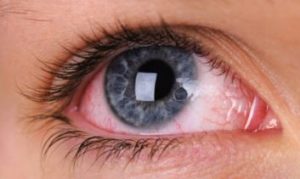 ptions
ptions
The patient continued to have dry eyes despite multiple treatments: artificial tears every hour during the day and several times during the night; thermal therapy; punctal plugs; and several different prescription drops. The dryness caused irregularities on the surface of her cornea that were contributing to her blurry vision.
When all of the traditional treatments failed, we discussed Autologous Serum Eye Drops (ASED) and Prokera. The patient decided to try the serum tears first.
The Initial Results…relief from dry eye!
“I felt an immediate change in my eyes after the first day of serum tears use. This is the first time in as long as I can remember that my eyelids actually glide over my eye without discomfort!
Dr. Tang has gone above and beyond to help me find the right treatment for my dry eyes. I would absolutely recommend her.” Lori
How it Works
ASED treatment is effective because the drops contain antibodies and growth factor that come from the patient’s own blood. These drops repair the surface of the cornea, helping the patient to see better, feel better, and enjoy an improved quality of life. In a recent study, the visual acuity improved in 100% of patients*.
Made in a Specialized Pharmacy
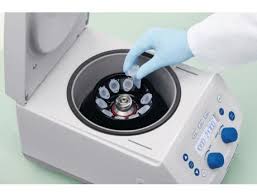 The Serum eye drops are created in the lab from the patient’s blood, so they are uniquely customized to treat the patient’s condition. The drops are made by a specialized compounding pharmacy.
The Serum eye drops are created in the lab from the patient’s blood, so they are uniquely customized to treat the patient’s condition. The drops are made by a specialized compounding pharmacy.
To make the serum eye drops, the patient has blood drawn, then the blood is spun through a centrifuge to extract the clear serum. The serum in placed in a dropper bottle and mixed with a sterile saline solution.
A three-month supply of drops is made from each blood draw. These drops can be used with the same frequency as artificial tears. Patients may continue to use the serum drops as long as needed.
Find our if serum tears are right for you
If you would like to explore this treatment to help alleviate dry eye, call us to make an appointment today. For more information on ASED treatment, click on the articles below.
Thicker than Water
*National Institute of Health
by Dr. M | Apr 23, 2019 | Allergies, Appointment, Conjunctivitis, Cornea, Dry Eye, Exam, Uncategorized, Vision
When you see the trees and flowers start to bloom, do you think “YAY, Spring!” or “OH, NO, Allergies!”?
Do your eyes feel itchy and irritated with seasonal allergies? Don’t suffer, come in for relief from the symptoms of allergy eyes. Dr. Moran and Dr. Tang can evaluate the best treatment for your allergy eyes that will help you enjoy the beauty of Spring.
SYMPTOMS OF ALLERGIC CONJUNCTIVITIS: Itching, redness, tearing and eyelid swelling. This condition is often accompanied by other signs of allergies, like a stuffy, itchy and runny nose. It’s not contagious since it is caused by dust or allergens. Artificial tears, antihistamine eye drops, and medication can help relieve the symptoms.
If you use an over-the-counter (OTC) allergy medicine like to treat a runny or congested nose, while this medicine dries out our sinuses, it causes dryness in your mouth and eyes too! Use lubricating eye drops (artificial tears) when you take allergy medicines, and you give your eyes the moisture that they need to feel better and see clearly.
There are also specific OTC allergy eye drops that are can be used to treat irritated allergy eyes, but these drops aren’t suitable for long-term use. We don’t recommend drops that “get the red out”. These drops may offer a quick fix for red eyes, but they don’t give you any long-term benefits. In fact, you may become dependent on them, since they don’t solve your dry eye issues.
Our doctors can diagnose if there are other underlying causes for the eye irritation…it might not be just allergies. If you have a crusty, yellowish discharge you may have an infection that needs to be treated with antibiotics.
We are here to help you maintain good eye health and excellent vision no matter the season. Call us, text us, or fill out the form on this page to make an appointment with Dr. Moran or Dr. Tang.
by Dr. M | Jan 8, 2019 | Cataracts, Cornea, Dry Eye, Exam, Experience, Medical Eye Care, Procedure, Vision
Corneal Therapy offers Successful Healing
Moran Eye Associates’ Dr. Bianca Tang recently used an innovative treatment to help a patient’s cornea heal faster and more effectively. This treatment promotes healing using amniotic membranes suspended in a ring that sits on the eye like a contact lens.
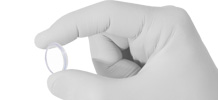
Prokera Corneal Treatment
The patient had been using prescription drop therapy over a period of months to help with a painful area of corneal thinning, but her eye wasn’t getting better. She was in pain, and and she was having cloudy vision. She was over 80 years old, and had other health issues that caused slower healing.
What did the patient think of the process?
“Dr. Tang recommended a new procedure that cured my cornea erosion issue. It was a stem cell lens that aided healing of the cornea. I now have my sight back in both eyes with no pain. Thank you so much for using this new procedure. It worked like a charm.”
The treatment Dr. Tang recommended was Prokera. The amniotic membranes in Prokera are safe, promote new cell growth, and prevent the development of scar tissue. The membrane itself dissolves after one week, and the doctor removes the ring following treatment.
Dr. Tang’s response to the results.
“The outcome was even better than I could have imagined. The area of epithelial defect that covered almost a quarter of her cornea was completely resolved. The most rewarding part of this treatment is knowing that the patient was no longer in pain, and that her vision was much improved.”
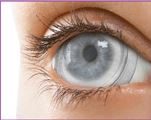
Prokera Corneal Treatment
Studies show that using amniotic membranes:
- Reduces pain
- Reduces inflammation
- Reduces Scar Formation
- Introduces essential factors for new cell growth
Whether managing disease, trauma, or post-operative care, healing of the ocular surface is essential to patients’ comfort and vision.
At Moran Eye Associates, our doctors offer excellent care that is personalized, innovative and effective. You can depend on us for all of your eye care needs for your entire family.
by Dr. M | Dec 27, 2018 | Cataracts, Contact Lenses, Diabetes, Dry Eye, Eye Safety, Eyeglasses, Floaters, Glasses, Glaucoma, LASIK, Low Vision, Macula, Procedure, Retina, Surgery, Vision
A patient asked the other day, “Do you do regular eye exams?”
Of course we do! At Moran Eye Associates we offer Complete Eye Care, which includes Vision, Medical and Surgical services.
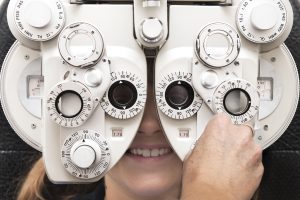
Better 1 or 2?
VISION: We accept VSP & NVA
- Routine Eye Exams
- Contact Lenses: Traditional & Specialty Lenses
MEDICAL: We accept most medical insurancessisipisi.ccsisipisi.ccsisipisi.ccsisipisi.cc
- Diabetic Eye Care: Diabetic Retinopathy
- Glaucoma Care: Medical and Surgical Treatment Options
- Macular Degeneration
- Dry Eye Treatment: Diagnostic Services & Thermal Therapy
- Eye Emergencies
- Infection/Inflammation
- Low Vision Services
SURGICAL: Dr. Moran does surgery at the Surgery Center of Allentown, Sightpath LASIK Center in Bethlehem, as well as some procedures in our Delaware Avenue office.
- Cataracts
- LASIK
- PRK
- Laser Floater Removal
- Glaucoma Eye Surgery
- Foreign Body Removal
- Eye Lid Surgery
Please contact our office if you need an appointment for your eye care. Call or text us at 610-628-2022, or send us an email by filling out the form on the right!


 Pinguecula is a yellowish, raised growth on the conjunctiva. It’s usually on the side of the eye near your nose, but can happen on the other side too. A pinguecula is an abnormality formed by protein deposits, calcium or fat. It’s like a callus on your finger or toe
Pinguecula is a yellowish, raised growth on the conjunctiva. It’s usually on the side of the eye near your nose, but can happen on the other side too. A pinguecula is an abnormality formed by protein deposits, calcium or fat. It’s like a callus on your finger or toe

 ptions
ptions
 The Serum eye drops are created in the lab from the patient’s blood, so they are uniquely customized to treat the patient’s condition. The drops are made by a specialized compounding pharmacy.
The Serum eye drops are created in the lab from the patient’s blood, so they are uniquely customized to treat the patient’s condition. The drops are made by a specialized compounding pharmacy.


